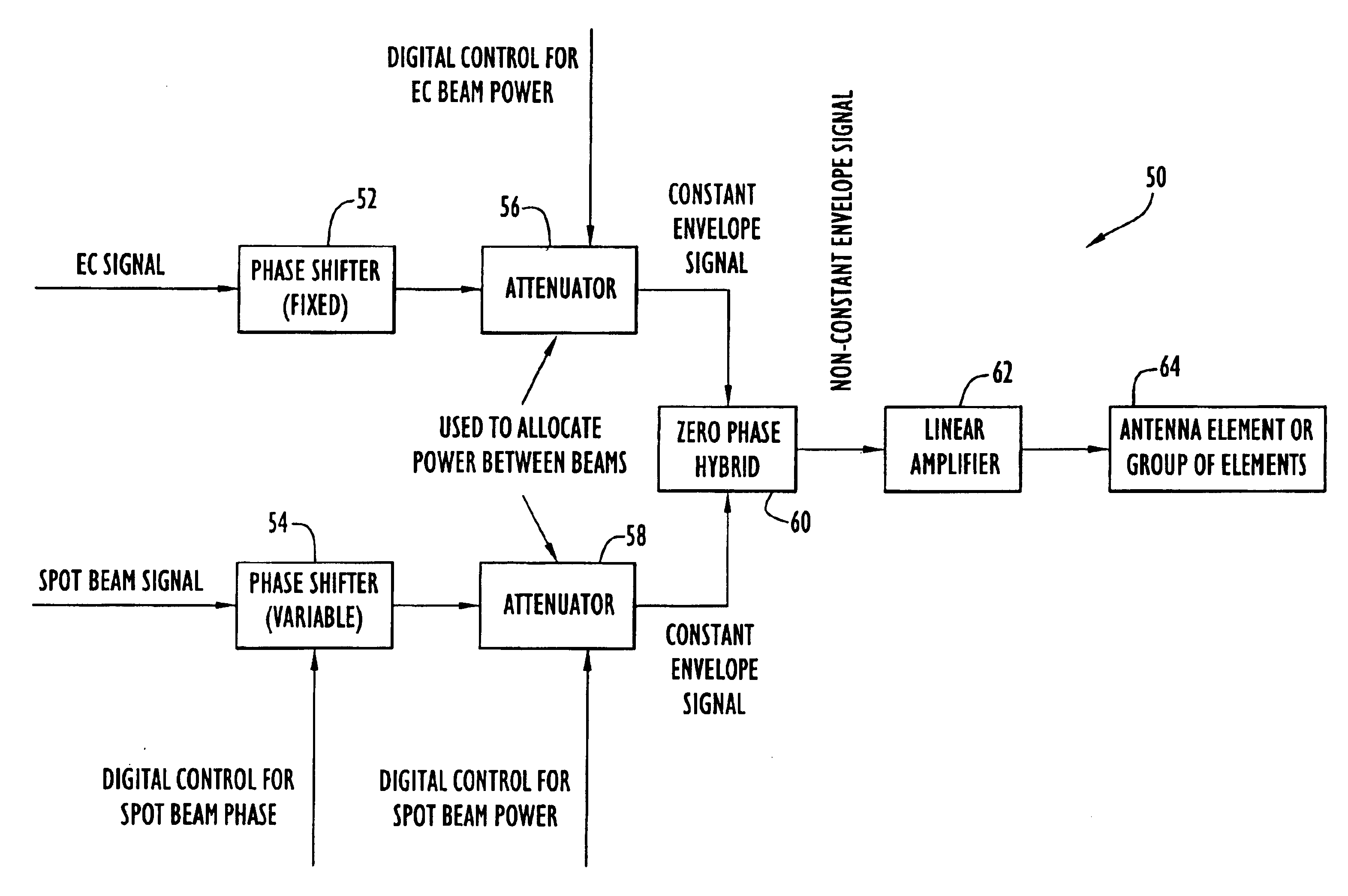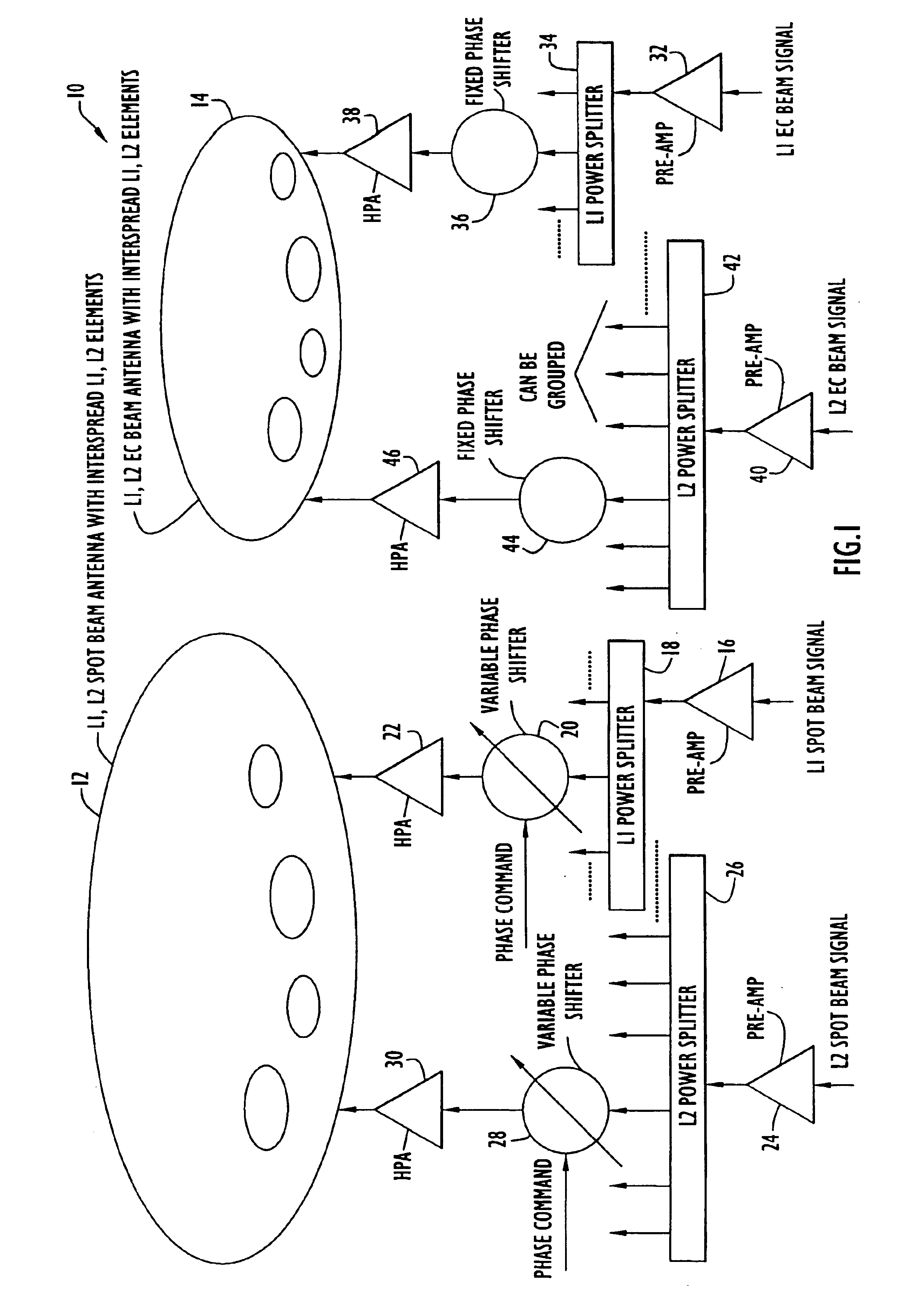Methods and apparatus for multi-beam, multi-signal transmission for active phased array antenna
a phased array antenna and multi-signal technology, applied in the direction of individual energised antenna arrays, instruments, reradiation, etc., can solve the problems of limiting the ability to rc-allocate power among the various beams, increasing system cost, size, weight and power requirements, and limiting the configuration of phased arrays with different signals on each beam. , to achieve the effect of constant envelope and avoid signal clipping
- Summary
- Abstract
- Description
- Claims
- Application Information
AI Technical Summary
Benefits of technology
Problems solved by technology
Method used
Image
Examples
Embodiment Construction
The system described herein provides a unique method for simultaneously transmitting multiple beams, each with its own signal component, from the same active phased array antenna. This configuration eliminates the need for separate antennas and transmitters for each of the required beams. The system is capable of forming multiple simultaneous beams, for example an earth coverage beam and multiple spot beams covering multiple theaters of operation, with the capability to re-allocate power among the various beams, which, in the context of satellite systems, can be performed on-orbit. The composite signal applied to each high-power amplifier (HPA) preferably, although not necessarily, has a constant amplitude envelope, which permits the use of saturated HPAs with their attendant power efficiency.
As used herein, the terms antenna beam(s), transmit beam(s) or simply “beam(s)”, including spot beams and earth-coverage beams, refer generally to radiated energy concentrated in a certain dire...
PUM
 Login to View More
Login to View More Abstract
Description
Claims
Application Information
 Login to View More
Login to View More - R&D
- Intellectual Property
- Life Sciences
- Materials
- Tech Scout
- Unparalleled Data Quality
- Higher Quality Content
- 60% Fewer Hallucinations
Browse by: Latest US Patents, China's latest patents, Technical Efficacy Thesaurus, Application Domain, Technology Topic, Popular Technical Reports.
© 2025 PatSnap. All rights reserved.Legal|Privacy policy|Modern Slavery Act Transparency Statement|Sitemap|About US| Contact US: help@patsnap.com



